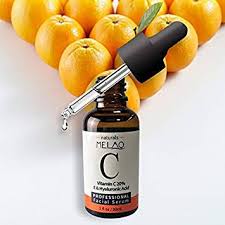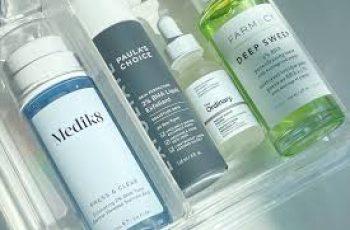
Can I Use Vitamin C After Microneedling? Here’s Everything You Need to Know
Microneedling might sound a little intimidating at first. The idea of rolling needles across your face isn’t exactly inviting. But don’t worry—it’s not as scary as it sounds.
In fact, microneedling is a skin treatment that has grown in popularity because of the wide range of benefits it offers. It’s commonly used to improve skin texture, reduce signs of aging, and treat acne scars.
The main benefit of microneedling lies in its ability to stimulate the skin’s natural healing process. When the skin thinks it’s been injured, it produces more collagen and elastin.
This surge in production helps the skin repair itself faster and more efficiently. As a result, you’re left with smoother, plumper, and more youthful-looking skin.
Let’s break down exactly how microneedling works and whether or not vitamin C is safe to use after your treatment.
How Microneedling Works on Your Skin
Microneedling is done using a device that looks like a pen but has many tiny, sterile needles at the tip. When this device is rolled over your skin, it creates tiny, controlled micro-injuries.
These injuries are not deep, but they are enough to trigger the skin’s repair response. The body responds by boosting collagen and elastin production to repair the “damage.”
Collagen and elastin are two vital proteins responsible for skin strength, elasticity, and structure. Collagen gives your skin firmness, while elastin helps it bounce back.
Unfortunately, as we age, collagen production slows down. This decline leads to the development of fine lines, wrinkles, sagging skin, and a weaker skin barrier.
Environmental stressors like UV rays, pollution, and free radicals also worsen the breakdown of collagen and elastin over time. That’s where microneedling can help.
Microneedling encourages new skin cell turnover. It stimulates collagen and elastin production to restore a youthful, firm, and radiant complexion over time.
It’s especially beneficial for those dealing with acne scars, uneven skin tone, large pores, and early signs of aging.
At-Home vs. Professional Microneedling
Microneedling treatments are widely available in dermatology clinics, skin care centers, and medical spas. These are always performed by trained professionals.
While at-home microneedling tools do exist, they come with risks. Using them incorrectly can lead to skin damage, infection, or scarring if not used properly.
If you’re new to microneedling or unsure how your skin will react, it’s best to book a session with a licensed skin specialist. They will tailor the treatment to your skin needs.
If your budget allows, professional microneedling is the safest and most effective choice.
Post-Treatment Care: Why It Matters
Microneedling may be minimally invasive, but it’s still a treatment that leaves your skin vulnerable. Tiny channels created in the skin make it more absorbent but also more sensitive.
This means that the products you apply after microneedling can have a stronger effect—both positive and negative.
Using the wrong ingredients too soon can lead to irritation, breakouts, redness, and even long-term sensitivity. That’s why proper aftercare is so important.
Let’s now look at one of the most popular skin ingredients—vitamin C—and whether or not you should use it after microneedling.
Can You Use Vitamin C After Microneedling?
The answer is both yes and no. While vitamin C is a powerful skincare ingredient, it should only be used after microneedling if your dermatologist specifically recommends it.
Vitamin C is packed with antioxidants that fight free radical damage, brighten the skin, and support collagen production. It’s often recommended for healing and brightening.
However, immediately after microneedling, your skin is in a vulnerable state. Those tiny micro-channels increase product absorption and also increase your risk of irritation.
Vitamin C, especially in high concentrations or low pH formulas, can sting or burn when applied to freshly treated skin. This may cause redness, itching, or inflammation.
That’s why most experts recommend avoiding vitamin C for at least 24–72 hours post-treatment unless you’re using a formula specifically made for post-procedure skin.
When in doubt, ask your skincare professional if your current vitamin C serum is safe to use after your treatment. They’ll be able to guide you based on your skin type and the formula.
What Serum Should You Use After Microneedling?
Hyaluronic acid is the number one recommended serum after microneedling. This ingredient is known for its ability to bind moisture to the skin and support healing.
After microneedling, your skin needs hydration to stay comfortable and to recover quickly. Hyaluronic acid delivers intense moisture without causing irritation.
Its lightweight texture makes it easy to apply, and it helps keep the skin plump, smooth, and refreshed. It can also minimize any tightness or dryness you may feel post-treatment.
Choose a serum with pure hyaluronic acid and no added fragrance or alcohol. Simplicity is key when your skin is healing.
Should You Use Moisturizer After Microneedling?
Absolutely, yes. Applying a gentle, fragrance-free moisturizer is essential after microneedling. It helps strengthen the skin barrier and lock in hydration.
A good moisturizer forms a protective layer over the skin. This keeps out environmental pollutants and other skin stressors like UV rays and dry air.
Look for moisturizers with nourishing ingredients like:
Hyaluronic acid
Vitamin E
Panthenol (Pro-Vitamin B5)
Ceramides
These will support your skin’s natural healing process without irritating it. Avoid moisturizers with synthetic fragrance, alcohol, or strong actives like retinol.
What to Avoid After Microneedling
There are some clear “do nots” when it comes to microneedling aftercare. Applying the wrong products or doing certain activities can irritate or damage your healing skin.
Here’s what you should avoid:
1. Exfoliants:
Do not use acids like glycolic acid (AHA), salicylic acid (BHA), or lactic acid. These exfoliants are too harsh for freshly microneedled skin and can cause dryness and peeling.
2. Retinol and Retinoids:
Avoid using any retinol-based product for at least 3–5 days after treatment. These ingredients can be too strong and may trigger irritation or flaking.
3. Makeup:
Skip foundation, concealer, and powders for at least 24 hours. Your skin needs time to breathe and heal. Also avoid using makeup brushes that could harbor bacteria.
4. Sun Exposure:
Avoid direct sunlight as much as possible. Your skin is more photosensitive post-treatment. Always wear SPF 30 or higher even if you’re indoors.
5. Swimming and Saunas:
Chlorinated water and high heat can irritate open skin channels. Avoid swimming pools, steam rooms, hot tubs, and saunas for 72 hours after your treatment.
6. Exercise:
Heavy workouts that cause sweating should be avoided. Sweat can carry bacteria into the skin and increase your risk of breakouts or infection.
Essential Aftercare Tips
To make sure you get the most out of your microneedling session, here are a few more aftercare tips to follow for the next 48–72 hours:
Hydrate constantly. Drink lots of water and apply hyaluronic acid regularly.
Keep your skin clean. Use a gentle cleanser with no exfoliating particles or active ingredients.
Sleep on a clean pillowcase. This minimizes your chances of infection or irritation.
Don’t touch your face. Your hands carry bacteria that can easily enter those micro-channels.
When Can You Reintroduce Vitamin C?
After about 3 to 5 days, most people can start reintroducing vitamin C into their routine. Start slow and use a gentle formulation to avoid triggering irritation.
Look for vitamin C products labeled as suitable for sensitive skin. Avoid pairing them with acids or retinol during the first week.
Always do a patch test first. Apply a small amount on one side of your face and see how your skin reacts over the next 24 hours.
If your skin feels calm and shows no signs of burning or redness, you can begin applying it once a day—preferably in the morning followed by SPF.
Final Thoughts
Microneedling is a powerful treatment that offers real results. It boosts collagen, smooths skin texture, and helps reduce signs of aging. But aftercare is key.
Vitamin C is a fantastic ingredient, but timing is everything. Don’t rush into using it right after your session. Give your skin the care and space it needs to heal.
Stick with gentle, hydrating products like hyaluronic acid, a nourishing moisturizer, and plenty of sunscreen in the first few days post-treatment.
As always, follow the advice of your dermatologist or licensed aesthetician. They know your skin best and can help you get the glowing results you’re after—safely.
Got more questions about post-microneedling care or skincare routines? Join us on Instagram—we’d love to hear from you!


